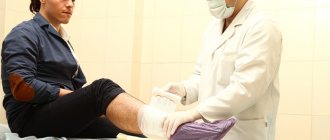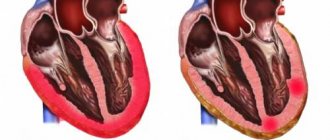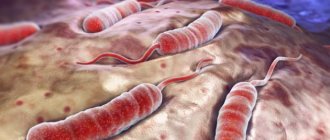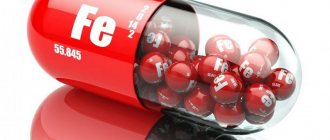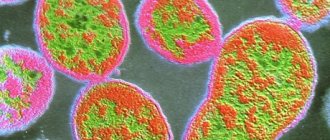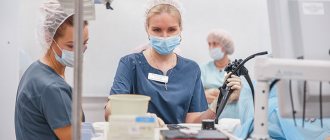Inflammation of the duodenum is a pressing problem among people in the older age group. The process in most cases is chronic, and the symptoms of the disease are mild. Experts pay close attention to damage to the duodenal bulb, especially in acute form.
This is associated with a high risk of complications that require urgent treatment. Therefore, diagnostics is aimed at early detection of this pathology. Let's look at what bulbitis is and how to treat it.
What it is?
Bulbit is an inflammatory disease of the mucous membrane of the duodenum (duodenum) with localization of the pathological process in its bulbar section. The common bile duct, the pancreatic duct, opens into the duodenal bulb. It is in this section that the acidic contents of the stomach are neutralized, and digestion processes begin under the influence of pancreatic and liver enzymes.
In gastroenterology, there is a tendency to reduce the frequency of Helicobacter-dependent bulbitis, which is associated with effective eradication therapy, but the frequency of idiopathic forms (not associated with H. pylori) remains high. In this case, complications that arise can threaten the patient’s life and require surgical intervention.
Complications caused by pathology
If you do not go to the clinic and do not begin treatment for the disease, you can get quite serious complications caused by duodenal bulbitis. Due to pathology, the functioning of the digestive system may be completely disrupted. Also, ulcers may begin to appear inside the body, which develop peritonitis, provoke perforation and bleeding. Another terrible complication that pathology causes is cancer. Doctors say that if professional treatment is not started in time, then in most cases a fatal outcome is possible, which provokes gastric bulbitis.
Reasons for development
The main cause of bulbitis is Helicobacter. Normally, there is a balance between the factors that increase and decrease the acidity of the stomach contents entering the duodenum.
When this balance is disturbed, hydrochloric acid damages the mucous membrane of the duodenum, which creates favorable conditions for Helicobacter, which are adapted to exist in an acidic environment.
In addition, the reasons for the development of bulbitis are factors that reduce the protective properties of the mucous membrane:
- immunity disorders,
- severe concomitant diseases,
- genetic, psycho-emotional and constitutional prerequisites.
Less commonly, bulbitis occurs when:
- Crohn's disease,
- Zollinger-Ellison syndrome,
- celiac disease;
- giardiasis;
- infection with worms;
- entry of a foreign body into the gastric cavity;
- poor nutrition;
- bad habits;
- consumption of hot food and drinks;
- gastritis;
- abuse of fatty, salty, spicy foods;
- food toxic infections.
Causes of erosive bulbitis:
- taking large quantities of medications;
- injuries and burns;
- alcohol abuse and smoking;
- postoperative consequences;
- reduced immunity.
Causes of superficial bulbitis:
- poor nutrition;
- stress;
- gastritis;
- chronic peptic ulcers;
- gastrointestinal infections;
- influence of pathogenic bacteria.
Causes of the chronic form:
- giardiasis;
- infection with worms;
- Crohn's disease.
Causes of the acute form:
- severe poisoning;
- medications;
- alcohol abuse;
- entry of a foreign body into the gastrointestinal tract.
Classification
The classification of bulbitis is based on the form of the disease and the types of its manifestation. There are two forms - acute and chronic. If treatment is started in a timely manner, the disease is cured completely and without consequences. Otherwise, it takes a chronic course, which causes a lot of trouble for the patient. Types of the disease differ in manifestations, severity and consequences.
Surface
This is one of the easiest and most treatable types of disease. It is called superficial bulbitis because it affects only the mucous membrane. At the same time, it becomes inflamed, soreness and swelling are formed, which makes it difficult for digestive juices to exit into the duodenum. As a result, there is stagnation of bile and a lack of enzymes for complete digestion of food.
Superficial bulbitis has two forms - acute and chronic. The acute form is most often infectious in nature. Chronic is characterized by alternating periods of exacerbation and remission.
Catarrhal
Catarrhal bulbitis is a more severe stage of the long-lasting superficial form of bulbitis. It is distinguished not only by swelling and inflammation, but also by dilation of capillaries on the surface of the mucosa, impaired intestinal motility, reflux of stomach contents into the esophagus (reflux), and the release of a large amount of cloudy mucus. Seasonal exacerbations are typical for catarrhal bulbitis. A long asymptomatic period is possible. The provocation is usually spicy food, stress or alcohol.
Focal
The doctor makes a diagnosis of “focal bulbitis” if the lesions of the bulb are not isolated, but cover entire areas of the mucous membrane. They can spread both towards the intestines and towards the stomach. Clinical manifestations are not specific. They are also characteristic of peptic ulcer disease and erosive bulbitis. The focal form may be the result of hormonal imbalances in the body. Exacerbations are often caused by vitamin deficiency, prolonged fasting, and strict diets.
Erosive
With erosive bulbitis, deeper damage to the bulb tissue occurs, down to the muscle layer. Most often, the cause of erosion is Helicobacter in combination with gastritis. Erosion can also occur due to damage to the glands that produce secretions that neutralize gastric acid. Erosive bulbitis is divided into several types depending on the depth of the lesion.
The chronic form is usually painless, the patient experiences only discomfort after eating (a feeling of a full stomach). Sometimes at night there may be aching pain. Severe pain is felt upon palpation. With erosive-hemorrhagic bulbitis, there may be an admixture of blood in the stool. With timely and adequate treatment of erosions, the prognosis is favorable. In advanced episodes, they lead to the formation of ulcers.
Follicular
During fibrogastroduodenoscopy, small nodular formations - follicles - are visible on the inner surface of the bulb. In this way, the lymphatic vessels located in the wall of the duodenum react to inflammation. The causative agents of the infection are parasites – helminths and Giardia. The development of the disease is facilitated by poor hygiene, reduced immunity, a history of gastritis and dietary errors. Symptoms are characteristic of all types of disease. It often occurs in children as a result of incompletely treated gastritis. Follicular bulbitis responds well to treatment and has a favorable prognosis.
Forms
| Name | Manifestations |
| Surface | The deep layers of the mucosa are not affected by inflammation, there is no severe pain, and the general condition does not noticeably worsen. |
| Catarrhal bulbitis | Cramping abdominal pain, increased gas formation, nausea, weakness, and sometimes headaches. |
| Focal | Inflammation affects only certain parts of the duodenal bulb. The clinical picture is similar to the diffuse form. The location of the pain may shift. |
| Erythematous bulbopathy | The formation of red, swollen spots on the mucous membrane of the duodenum, strewn with small bleeding ulcers. There are traces of blood in the stool and vomit. |
| Erosive | Characterized by a severe course. On the inflamed mucosa there are shallow wounds (scratches, cracks), surrounded by edematous tissue that gathers into folds. The pain is more intense in the morning and evening hours. Nausea may be accompanied by vomiting and an attack of dizziness. Heartburn and belching of undigested food are possible. |
| Erosive-ulcerative | Ulcers form at the site of the wounds, causing severe pain on an empty stomach and after eating. There is a risk of bleeding in the duodenum, then feces and vomit become dark red or black. |
| Cicatricial (cicatricial-ulcerative deformity) | The result of illiterate treatment of duodenal ulcers. Scars form at the site of ulceration, leading to deterioration of peristalsis and patency. |
| Hyperplastic | It develops against the background of long-term inflammation, acquiring a lumpy appearance, which indicates tissue proliferation. May be caused by cancer. |
| Atrophic | The mucous membrane of the duodenum becomes thinner, which disrupts the functioning of the organ. There is frequent sour belching containing pieces of undigested food, heaviness and rumbling in the stomach and intestines, epigastric pain, and stool disturbances. |
| Follicular | Many bubbles form on the mucous membrane of the duodenum, which subsequently burst and transform into small ulcerations. |
When the pathology combines the manifestations of different types of bulbitis, it is called mixed bulbitis.
General symptoms of bulbitis
The main manifestations of acute bulbitis:
- intense pain in the epigastric region;
- nausea, vomiting;
- pain on palpation in the stomach area;
- general weakness, drowsiness;
- decreased appetite;
- increase in body temperature.
The most common symptoms of chronic inflammation are:
- periodically occurring pain (“hungry”, night, early or late, diffuse girdling or clearly localized, in the epigastric region or in the hypochondrium, which depends on the clinical course of bulbitis), relieved by eating, antacid or antisecretory medications;
- belching sour or rotten, possible belching of air;
- tendency to constipation or diarrhea; unstable stools are also possible, manifested by alternating constipation and diarrhea;
- pain on palpation in the epigastric zone;
- heaviness in the epigastrium after eating;
- flatulence, spastic pain in the abdominal area;
- weight loss;
- additional symptoms in the form of general weakness, sweating, palpitations, shortness of breath, tremor (possible with the neuroendocrine version of bulbitis).
In some cases, bulbitis can be asymptomatic, being detected accidentally during an endoscopic examination for other diseases or at the stage of complications.
Diagnostics
Diagnosis of any type of duodenal bulbitis is not particularly difficult, since each form of inflammation has characteristic symptoms. The most important thing during diagnosis is to determine the degree of damage to the mucous membrane, for this they use:
- FEGDS;
- X-ray of the stomach;
- Ultrasound.
In addition, the following are carried out:
- examining the patient and determining the intensity of expression of signs of the disease;
- a general and biochemical blood test to determine its composition, since in bulbitis it is changed;
- laboratory tests of gastric juice;
- a breath test system that can detect infectious bacteria.
After receiving all the results of tests and images, as well as establishing the type of bulbitis of the stomach and duodenum, treatment methods are prescribed.
How can you treat it at home?
You can remove unpleasant symptoms not only with the help of medications. For various forms of the disease, certain remedies prepared from plants are recommended, which are shown in Table 2.
Table 2 Folk remedies for the treatment of gastric bulbitis
| Type of bulbit | Natural remedy |
| Catarrhal | Plantain juice with honey, chamomile infusion, Icelandic moss infusion |
| Surface | St. John's wort tea, propolis tincture |
| Follicular | A decoction of cloves, tansy, wormwood, an infusion based on oregano, birch leaves and elecampane |
| Erosive | Oak bark decoction |
| Atrophic | Cranberries, cabbage juice, yarrow infusion |
| Hypertrophic | Sea buckthorn oil |
| Hyperplastic | St. John's wort infusion, aloe juice |
Herbal remedies reduce the pronounced signs of bulbitis and gastric damage in combination with traditional drug therapy.
Drug treatment
Treatment with medications can only be started after consultation with a gastroenterologist. The selection of medications is carried out based on the cause of bulbitis and the morphological form of the pathology. The following types of medications may be prescribed for therapy:
- Antacids. This group has proven to be effective when it comes to reducing acidity. As a rule, Gastal, Rennie, Almagel, Maalox are prescribed, which reduce the irritating effect that affects the gastric mucosa. Antisecretory agents such as Omeprazole and Ranitidine may also be prescribed.
- Painkillers. In the acute form of bulbitis, the doctor may prescribe No-shpa, Papaverine, Baralgin to reduce pain.
- In case of helminthic infestation, anthelmintic (anthelmintic) drugs will be prescribed: Suramin, Levamisole.
- When infected with bacteria, or when the hydrochloric acid barrier is weakened, antibacterial agents are prescribed. The appointment is based on microbiological and laboratory testing.
- Light sedatives help with the stress factor of gastric bulbitis.
Forecast
With timely diagnosis and comprehensive treatment, the prognosis is favorable. Patients with atrophic duodenitis, impaired duodenal patency, chronic pancreatitis, and pathology of the biliary tract are subject to dynamic dispensary observation with control endoscopic, ultrasound and laboratory tests carried out once a year.
The main cause of bulbitis is currently considered to be infection with Helicobacter pylori bacteria, which invade the intestinal wall, colonizing it and causing inflammation.
Folk remedies
Traditional methods of treating bulbitis can be very effective, since the main cause of the pathology is inflammation. In addition, since bulbitis is often secondary, normalizing the function of neighboring organs improves the course of bulbitis. It is worth knowing, however, that in some conditions (infection, poisoning, immunodeficiency, radiation, diseases of the blood, kidneys, heart and other severe pathologies), traditional treatment is not only ineffective, but can also be dangerous.
To treat bulbitis, you can use the following medicinal herbs:
- Collection No. 1. To prepare the tincture, you should take chamomile flowers, plantain leaf and peppermint (two parts of each herb), St. John's wort and yarrow herb (one part of each herb). Mix all herbs. One tablespoon of herbal mixture should be poured into 0.5 liters of boiling water. Leave to infuse for 1 hour. After this, the tincture must be strained. Take 2–3 days, a quarter glass every hour. After 3 days, drink half a glass 4 times a day before meals, and also before bed. The course of treatment with this collection is 2 weeks. The tincture has an anti-inflammatory, astringent, antimicrobial, hemostatic and wound-healing effect, and is used for acute bulbitis.
- Collection No. 2. Take 10 parts of crushed rose hips and hawthorn fruits, 4 parts of chamomile flowers and calendula flowers, 5 parts of oat seeds and cudweed grass, 3 parts of plantain leaves and elecampane root, 1.5 parts of celandine grass and grass. centaury. Prepare and take in the same way as collection No. 1.
- Collection No. 3. Take 2 parts of mint leaves and flax seeds, 3 parts of calendula flowers, licorice root, nettle leaves and blue cyanosis root, 4 parts of coltsfoot leaves, 1 part of fennel fruit and yarrow herb and 5 parts of dried grass and rose hips. Prepare and take as collection No. 1.
To treat bulbitis with giardiasis, you can use the following recipes:
- Mix freshly prepared garlic juice in the amount of 10 - 15 drops with milk (the milk needs to be boiled, but should be drunk warm) and drink 2 - 3 times a day before meals.
- Grate garlic and horseradish in equal parts (25 grams), mix to form a paste, add half a liter of vodka. The tincture should be kept for 10 days in a dark place (during this time you need to shake it periodically). After 10 days, the tincture should be filtered and taken one tablespoon 2 - 3 times a day half an hour before meals, washing the tincture with a sip of water.
- A 1% eucalyptus solution should be diluted in 30 ml of water (2 tablespoons) and taken daily, 1 teaspoon 3 times a day, 30 - 40 minutes before meals.
- Pour 1 teaspoon of corn silk into a glass of boiled water, leave for some time, then take 1 - 2 tablespoons 3 - 4 times a day.
- Pumpkin seeds (recipe for adults) in the amount of 300 grams should be crushed in a mortar, add 50 - 60 ml of water, 50 - 100 mg of honey and mix. Take in small portions over an hour on an empty stomach. After the patient eats the entire mass, you should wait 3 hours and drink a laxative.
Medicinal teas for bulbitis can alleviate or eliminate the following symptoms:
- stomach pain – cardamom seeds, Roman chamomile flowers, ground cinnamon bark, fennel seeds, ginger root, cinnamon root, valerian roots;
- poor digestion and appetite – licorice root, mint leaves, sage flowers, yarrow flowers, fennel seeds;
- irritability – chamomile (Roman or German), lemon balm leaves, valerian root, kava kava roots,
- diarrhea – raspberry leaves;
- nausea – ginger root.
Nutrition rules and diet for bulbitis
We should also talk about diet during the treatment of bulbitis. This is a very important factor on the path to recovery.
Proper nutrition is necessary for every person. This is good. But, as a rule, it is not possible to monitor your diet, and most people do not even know what proper nutrition is. It is especially important for people suffering from inflammatory diseases of the gastrointestinal tract. Diet is not precisely the identity of the products that are approved for use, since all diseases are individual, like each organism.
A nutritionist, together with a gastroenterologist, will help you choose the right diet, which will need to be followed for a fairly long period of time - about six months. And even if the symptoms of the disease have passed, you still need to continue to adhere to the diet.
When bulbitis worsens, it is important to immediately give up foods that irritate the mucous membrane - coffee, strong tea, alcoholic drinks, spicy, smoked, salty and fatty foods. After all, they became the provoking link in the occurrence of the attack.
In the first days after an attack, you should eat only liquid food. Since food for such a patient should be easily digestible and even a kind of “unloading”. Subsequently, a mandatory condition for treatment should be separate and fractional meals. Food intake should be increased to 6 times a day. Food must be kept warm. Table salt is limited to 5 grams per day, sugar - to 50 grams.
In the first weeks, the foods allowed for consumption include soft-boiled eggs, scrambled eggs, steamed slimy porridges, baked apples, chicken broth and fillet, compotes and jelly, up to four glasses of milk, milk and cereal soups, meat and fish in the form of a soufflé. Bakery products are prohibited.
After two weeks of treatment, you can slightly expand your food intake to include day-old white bread, crackers, biscuits, low-fat sour cream, butter, low-fat cottage cheese, steamed pork cutlets, boiled veal, and pasta. The only drinks you can include for now are tea, and even a weak one. And freshly squeezed juices from non-acidic fruits and vegetables. Nutritionists can also recommend drinking one tablespoon of olive oil half an hour before meals. And so twice a day - morning and evening. This suppresses the secretion of gastric contents well and helps in treating the disease.
Sample diet menu for one day for bulbitis
Breakfast. 8 ocloc'k
- Steamed omelette stuffed with carrots.
- A glass of weak, slightly sweetened tea with milk.
Lunch. 10 hours
- Apple puree.
Snack. 11 hours 30 minutes
- Rose hip decoction
Dinner. 12 hours 30 minutes
- Chicken meatball soup.
- Boiled rice with steamed veal cutlet.
- Kissel.
Afternoon snack. 15 hours
- Glass of compote
- Crackers
Dinner. 5:30 p.m.
- Carrot salad
- Fish soufflé.
- Buckwheat porridge.
Second dinner. 19 hours
- Rusk pudding with pear puree.
- A glass of tea.
Before bedtime. 21 o'clock
- A glass of milk.
It is important to remember that if you suddenly stop following this diet, you can go back to square one and then have to start treatment all over again. It is also important to listen to the recommendations of specialists.
How to make an appointment with a gastroenterologist
In order to undergo diagnostics at JSC “Medicine” (clinic of Academician Roitberg), just call +7 (495) 995-00-33 and fill out the feedback form on the website. In any case, the consultant will help you choose the most convenient time and tell you about all the available specialists, thanks to which the appointment will be organized in just a few minutes. The clinic employs doctors who use modern equipment and innovative treatment methods. So the disease will be affected. The main thing is to decide to make an appointment and find an effective recovery method.
Prevention
As in the case of duodenogastric reflux (DGR), the occurrence of bulbitis can be prevented if you live by the new rules:
- Following the principles of healthy food consumption.
- Quit smoking and all alcoholic drinks, even beer.
- Avoiding stressful situations.
- Attentive attitude to health and treatment of emerging diseases.
The prognosis for recovery is most favorable provided that you seek medical help in a timely manner and comply with all prescriptions and recommendations of the attending physician.
Stomach cancer Gastric ulcer Gastritis Erosive gastritis Hiatal hernia Low stomach acidity
